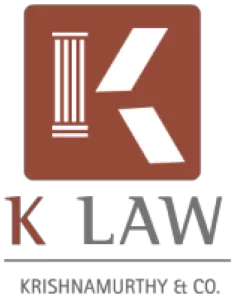The law of injunction in our country finds its roots from the equity jurisprudence inherited from English law, who borrowed it from the Roman law. Following the principle of Ubi jus, ibi remedium1, an injunction provides remedy by prohibiting/restraining person(s) from doing a specified act or commanding them to undo some wrong or injury. The relief of injunction is discretionary and equitable and cannot be claimed as a matter of right.
In usual course, such interim reliefs are sought under Order XXXIX of the Code of Civil Procedure, 1908 ("Code"). Order XXXIX, Rule 1 provides for cases in which temporary injunction may be granted. It reads as follows:
"... Where in any suit it is proved by affidavit or otherwise –
(a) that any property in dispute in a suit is in danger of being wasted, damaged or alienated by any party to the suit, or wrongfully sold in execution of a decree, or,
(b) that the defendant threatens, or intends to remove or dispose of his property with a view to defrauding his creditors, the Court may by order grant a temporary injunction to restrain such act, or make such other order for the purpose of staying and preventing the wasting, damaging, alienation, sale, removal or disposition of the property (or dispossession of the plaintiff, or otherwise causing injury to the plaintiff in relation to any property in dispute in the suit as the Court thinks fit, until the disposal of the suit or until further order)
(c) that the defendant threatens to dispossess the plaintiff or otherwise cause injury to the plaintiff in relation to any property in dispute in the suit..."
However, the Supreme Court has held in a catena of cases2 that Order XXXIX Rule 1 and 2 of the Code are not the sole repository of the court's power to grant injunction. Section 94 and 151 of the Code also confer power upon the court to grant temporary injunction in order to prevent the ends of justice being defeated.
The Section 94 (c) of the Code states,
"... 94. Supplemental proceedings.-
In order to prevent the ends of justice from being defeated the Court may, if it is so prescribed,-
............
(c) grant a temporary injunction and in case of disobedience commit the person guilty thereof to the civil prison and order that his property be attached and sold;
.........
(e) make such other interlocutory orders as may appear to the Court to be just and convenient..."
While granting injunctive reliefs, the court weighs every case on a scale governed by 'Trinity of Principles' which are, (i) Balance of convenience; (ii) prima facie case and (iii) Irreparable harm or injury which cannot be compensated by money.3
Recently, in the matter of Tamminedi Ramakrishna Etc. v. N. Jayalakshmi4, the Supreme Court issued notice in this SLP wherein the issue was - whether the defendant has any right to seek injunction in view of Order XXXIX Rule 1 (c) of the Code.
The SLP challenges the order of the Karnataka High Court5 which affirmed the decision (of the Trial Court), thereby granting temporary injunction in favour of the defendant under Order XXXIX Rule 1 (a), (b) and (c) r/w Section 151 of the Code. In the Impugned judgment, the High Court sought to distinguish the three sub-rules of Order XXXIX Rule 1 of the Code, wherein, sub-rule (b) and (c) provide the remedy only to the Plaintiff as opposed to sub-rule sub rule (a) which is a general provision, "that any property in dispute in a suit is in danger of being wasted, damaged or alienated by any party to the suit, or wrongfully sold in execution of a decree". It was in this context that the Defendant was granted the remedy under Order XXXIX Rule 1 (a) of the Code.
Views of various High Courts on this issue:
The earliest view on this aspect was given by the High Court of Travancore and Kochi (erstwhile)6 while answering the question whether the defendant can move for an injunction against the plaintiff without filing a counter-claim. The court answered affirmatively in the light of authorities7 in English Law and held only in a case where the defendant's claim arises out of the plaintiff's cause of action or is incidental to it, that they can ask for a temporary injunction against the plaintiff. This view was followed by many High Courts for decades8.
The Allahabad High Court in Ganga Bricks Udhyog v. Jai Bhagwan Swarup9, granted interim relief to the defendant by ordering the plaintiff to give security for compensating the loss of the defendant, in the event of failure of their suit. The court held that the loss incurred by the defendant by operation of stay orders should also be secured because the defendants would be prejudiced if the suit is withdrawn, dismissed and if status quo continues during such pendency of the suit.
It was the Kerala High Court that expanded the horizons of Order XXXIX in Vincent v. Aisumma10 ("Vincent"). The court observed that there is no prohibition in the Rules under Order XXXIX against a defendant making an application for injunction. Rules in Order XXXIX and Order XL are intended to protect the subject matter of the suit and to safeguard the rights of parties during the pendency of the litigation. This is evident from the expressions used in Rules 2A, 3, 3A and 4 of Order XXXIX, where the term "Plaintiff" or "Defendant" is not specifically mentioned. Rather terms like "Person", "the Opposite Party" and "any Party" are used. The court held that principle behind Order XXXIX is to contain the mischief and maintain status quo during pendency of the lis. As the suit is binding on the plaintiff and defendant equally, the defendant cannot be exposed to the mischief committed by plaintiff merely because plaintiff approached the court first.
The position of law propounded in Vincent opened new avenues and the courts are now more mindful of the interests of defendants as well while dealing with applications under Order XXXIX Rule 1 & 2. In fact, as a matter of practice, while dealing with injunction applications in property suits, orders are passed to restrict 'both parties' from creating third party interests in the suit property, even in an application moved by the Plaintiff.11
Recently, Himachal Pradesh High Court in the matter of The Himachal Pradesh State Electricity Board Limited vs. Valecha Engineering Limited and Ors.,12 while relying upon the judgment in Shakunthalamma v. Kanthamma,13 held that defendant can maintain its application seeking injunction under sub rule (a) of Order XXXIX, Rule 1 of the Code only. The court also held that the remedy under Rule 1 (b) and (c) is not available to the defendant and such application by the defendant would not be maintainable. The court also held that cases in which interim relief sought does not fall under Order XXXIX, Rule 1 (a) of the Code, the court has inherent jurisdiction to grant the relief of temporary injunction in its discretion, if it is satisfied that such an order is necessary to meet the ends of justice or to prevent abuse of process of the court and nothing in this Code shall limit or otherwise affect such inherent power of the court.
Conclusion:
As it has been extensively discussed, the Code provides for various manners in which a party can seek the remedy of temporary injunction. In our opinion, the intention of the legislature is crystal clear from the words used in Order XXXIX Rule 1 which specifically provides for remedy for plaintiff against the action/inaction of the defendant under sub rule (b) and (c). It is only sub rule (a), which is worded in a party neutral manner. Thus, it is clear that legislature has deliberately made out distinction amongst plaintiff and defendant qua remedies available under the Code. Therefore, it would not be proper for the court to hold to the contrary, against the intention of the legislature. Providing the remedy under sub rule (c) to the defendant would amount to not only rewriting the statutory provision by the court, but also going against the legislative intent.
In any event, the defendants are not left remediless and can invoke the inherent powers of civil courts under can exercise its power under Article 142 of the Constitution to provide any relief to do complete justice, in the appropriate facts and circumstances.
The final decision in the Tamminedi will be closely monitored. One can only hope for the legal position to be crystallized by the Apex Court and for a conclusive interpretation of the relevant provisions which can further standardize and guide the litigation process for the affected stakeholders for times to come.
Footnotes
1. where there is a right, there is a remedy
2. Manohar Lal Chopra v. Rai Bahadur Rao Raja Seth Hiralal, AIR 1962 SC 527; Tanusree Basu and Ors. v. Ishani Prasad Basu and Ors., AIR 2008 SC 1909; Rikhabsao Nathusao Jain v. Corpn. of the City of Nagpur and Ors., (2009) 1 SCC 240
3. The State of Mizoram & Ors. v. M/S Pooja Fortune Private Limited & Etc., Civil Appeal Nos. 8899-8900 of 2019 decided on 15.11.2019
4. SLP (C) No(s). 12678-12679/2021, Order dated 23.08.2021
5. Order dated 15.03.2021 in M.F.A. 102789/2020
6. B.F. Varghese v. Joseph Thomas, AIR 1957 TC 286
7. Carter v. Fay, (1894) 2 Ch. 541; Collison v. Warren, (1901) 1 Ch 812 (A)
8. Rattu v. Mala, AIR 1968 Raj 212; Municipal Corporation of Greater Bomaby v. Bhagwan Sakharam Salaskar, AIR 1974 Bom 272; Suganda Bai v. Sulu Bai, AIR 1975 Kant 137; Ashis Ranjan Dass v. Rajendra Nath Mullick, AIR 1982 Cal 529
9. AIR 1982 All 333
10. AIR 1989 Ker 81
11. Smt. Priyanka Ohri v. Shri Naman Jolly and Ors., C.S.(O.S.) 353/2016, order dated 26.07.2016 (Delhi High Court)
12. OMP No. 169 of 2020 in COMS No. 22 of 2019 decided on 12.10.2020
13. AIR 2015 Karnataka 13
The content of this article is intended to provide a general guide to the subject matter. Specialist advice should be sought about your specific circumstances.




